-
 Bitcoin
Bitcoin $107,341.7259
0.15% -
 Ethereum
Ethereum $2,438.6204
0.70% -
 Tether USDt
Tether USDt $1.0003
-0.02% -
 XRP
XRP $2.1866
1.94% -
 BNB
BNB $649.0952
0.36% -
 Solana
Solana $150.9602
5.63% -
 USDC
USDC $0.9999
0.00% -
 TRON
TRON $0.2742
0.40% -
 Dogecoin
Dogecoin $0.1645
1.93% -
 Cardano
Cardano $0.5669
1.18% -
 Hyperliquid
Hyperliquid $37.8286
4.19% -
 Bitcoin Cash
Bitcoin Cash $491.4669
-2.74% -
 Sui
Sui $2.8150
3.06% -
 Chainlink
Chainlink $13.4184
2.91% -
 UNUS SED LEO
UNUS SED LEO $9.0809
0.27% -
 Avalanche
Avalanche $18.0295
2.60% -
 Stellar
Stellar $0.2396
1.19% -
 Toncoin
Toncoin $2.8587
0.13% -
 Shiba Inu
Shiba Inu $0.0...01160
2.59% -
 Litecoin
Litecoin $86.4192
1.45% -
 Hedera
Hedera $0.1486
1.19% -
 Monero
Monero $308.4324
0.87% -
 Polkadot
Polkadot $3.4202
1.43% -
 Bitget Token
Bitget Token $4.6436
-0.34% -
 Dai
Dai $0.9998
-0.02% -
 Ethena USDe
Ethena USDe $1.0002
0.00% -
 Uniswap
Uniswap $7.1527
3.29% -
 Pi
Pi $0.5357
-8.45% -
 Pepe
Pepe $0.0...09588
4.61% -
 Aave
Aave $259.9759
0.81%
DeFi Jargon Introduction: Exclusive Vocabulary of Decentralized Finance
DeFi introduces terms like yield farming, liquidity pools, TVL, flash loans, and wrapped tokens, essential for navigating this innovative financial landscape.
May 10, 2025 at 01:00 am
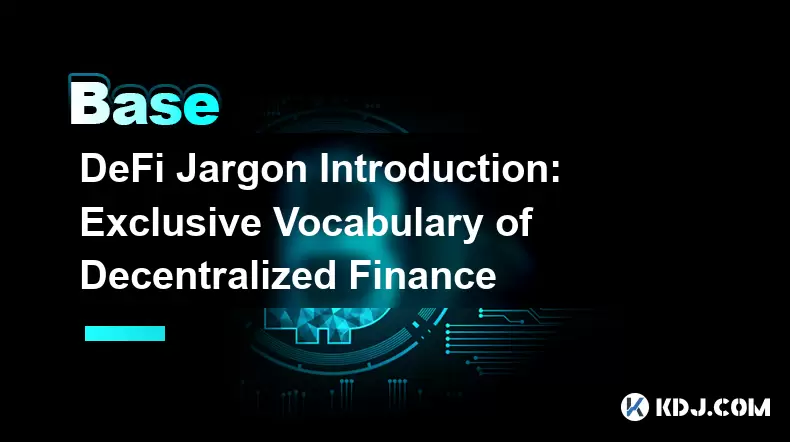
DeFi, or Decentralized Finance, has introduced a new lexicon to the world of cryptocurrency, which can be both exciting and overwhelming for newcomers. This article aims to demystify the exclusive vocabulary of DeFi, providing a comprehensive introduction to terms that are essential for navigating this innovative financial landscape. From yield farming to liquidity pools, understanding these terms is crucial for anyone looking to participate in DeFi.
Understanding Yield Farming
Yield farming is a popular method in DeFi where users can earn rewards by lending or staking their cryptocurrencies. This process involves providing liquidity to a DeFi platform, which then uses these funds to facilitate transactions or other financial services. In return, users receive tokens as rewards, often in the form of the platform's native token or interest from loans. Yield farming can be lucrative but also comes with risks, such as impermanent loss and smart contract vulnerabilities.
To start yield farming, users typically follow these steps:
- Choose a DeFi platform: Research and select a reputable DeFi platform that offers yield farming opportunities.
- Connect a wallet: Use a compatible cryptocurrency wallet, such as MetaMask, to connect to the platform.
- Deposit assets: Transfer your chosen cryptocurrencies into the platform's liquidity pool.
- Stake or lend: Depending on the platform, you can either stake your assets or lend them out to earn rewards.
- Monitor and manage: Regularly check your investments and adjust your strategy as needed to optimize returns.
Liquidity Pools Explained
Liquidity pools are fundamental to many DeFi protocols, enabling users to trade assets without the need for traditional intermediaries. These pools are essentially smart contracts that hold a reserve of tokens, allowing for decentralized trading. Users who contribute to these pools are known as liquidity providers and are rewarded with a portion of the trading fees generated by the pool.
To become a liquidity provider, follow these steps:
- Select a DeFi exchange: Choose a decentralized exchange that uses liquidity pools, such as Uniswap or SushiSwap.
- Choose a pool: Identify a liquidity pool that aligns with your investment strategy and risk tolerance.
- Add liquidity: Deposit an equal value of two tokens into the pool, typically a cryptocurrency pair like ETH/USDT.
- Receive LP tokens: Upon adding liquidity, you will receive liquidity provider (LP) tokens, which represent your share of the pool.
- Earn rewards: Collect trading fees generated by the pool, which are distributed proportionally to LP token holders.
The Concept of Total Value Locked (TVL)
Total Value Locked (TVL) is a key metric in DeFi, representing the total amount of assets locked in a particular protocol or across the entire DeFi ecosystem. TVL is used to gauge the health and popularity of DeFi platforms, as higher TVL often indicates greater trust and usage. This metric is calculated by summing the value of all assets deposited into smart contracts within the DeFi system.
To find the TVL of a specific platform, you can:
- Visit DeFi analytics sites: Websites like DeFi Pulse or DeFi Llama provide real-time data on TVL across various platforms.
- Check platform-specific metrics: Many DeFi projects display their TVL directly on their website or through their official communication channels.
Deciphering Flash Loans
Flash loans are a unique feature of DeFi, allowing users to borrow funds without collateral, provided the loan is repaid within the same transaction. This mechanism is enabled by smart contracts and can be used for arbitrage, debt swapping, or other complex financial maneuvers. Flash loans are popular among developers and traders for their flexibility and potential for high returns, but they also carry significant risks.
To execute a flash loan, follow these steps:
- Choose a flash loan provider: Select a DeFi platform that offers flash loans, such as Aave or dYdX.
- Design your strategy: Plan how you will use the borrowed funds and ensure you can repay the loan within the same transaction.
- Initiate the loan: Use the platform's interface or develop a smart contract to request the flash loan.
- Execute your strategy: Carry out your planned financial operation using the borrowed funds.
- Repay the loan: Ensure the loan is repaid within the same transaction to avoid defaulting.
Exploring Wrapped Tokens
Wrapped tokens are a type of cryptocurrency that represents another asset on a different blockchain. They are created to facilitate interoperability between different networks, allowing users to utilize assets from one blockchain on another. For example, Wrapped Bitcoin (WBTC) is a token on the Ethereum blockchain that represents Bitcoin, enabling Bitcoin holders to participate in DeFi applications built on Ethereum.
To acquire wrapped tokens, you can:
- Use a wrapping service: Platforms like BitGo or RenVM offer services to wrap and unwrap tokens.
- Deposit the original asset: Transfer the asset you want to wrap to the service provider.
- Receive wrapped tokens: Once the deposit is verified, you will receive the equivalent amount in wrapped tokens.
- Utilize wrapped tokens: Use the wrapped tokens in DeFi applications on the target blockchain.
Frequently Asked Questions
Q: What is the difference between yield farming and staking?
A: While both yield farming and staking involve locking up assets to earn rewards, they differ in their mechanisms. Yield farming typically involves providing liquidity to DeFi platforms and earning rewards from trading fees or platform tokens. Staking, on the other hand, involves holding and locking up a cryptocurrency to support the operations of a blockchain network, earning rewards in the form of additional tokens.
Q: How can I minimize the risks associated with liquidity pools?
A: To minimize risks in liquidity pools, consider the following strategies:
- Diversify your investments: Spread your assets across multiple pools and platforms to reduce the impact of potential losses.
- Research thoroughly: Choose well-established and audited platforms to minimize the risk of smart contract vulnerabilities.
- Monitor market conditions: Keep an eye on market volatility and adjust your positions accordingly to avoid impermanent loss.
Q: Are flash loans suitable for beginners?
A: Flash loans are complex financial tools that require a good understanding of DeFi mechanics and smart contract programming. They are generally more suitable for experienced users or developers who can design and execute sophisticated strategies. Beginners should approach flash loans with caution and consider starting with simpler DeFi activities.
Q: Can wrapped tokens be converted back to their original form?
A: Yes, wrapped tokens can be converted back to their original form through the unwrapping process. To do this, you typically need to:
- Use the same wrapping service: Return to the platform where you initially wrapped your tokens.
- Initiate the unwrapping process: Request to unwrap your tokens through the service provider's interface.
- Receive the original asset: Once the unwrapping is complete, the original asset will be transferred back to your wallet.
Disclaimer:info@kdj.com
The information provided is not trading advice. kdj.com does not assume any responsibility for any investments made based on the information provided in this article. Cryptocurrencies are highly volatile and it is highly recommended that you invest with caution after thorough research!
If you believe that the content used on this website infringes your copyright, please contact us immediately (info@kdj.com) and we will delete it promptly.
- Kitten Craze Online: Hunting for the Purr-fect Coin Purse
- 2025-06-29 10:30:12
- Pudgy Penguins Soar to 3-Month High Amidst PENGU ETF Buzz!
- 2025-06-29 10:30:12
- AI Agents, Token Role, and Capitalization: Navigating the Web3 Frontier
- 2025-06-29 10:50:11
- Avalanche Price Forecast: Grayscale Boost Signals Potential Rally to $50?
- 2025-06-29 10:50:11
- Khazan's Getting a Facelift: Balance Changes and Freebies Galore!
- 2025-06-29 11:10:12
- Wall Street's Crypto Rival Battle: Saylor vs. Chanos and the Meme Coin Mania
- 2025-06-29 11:10:12
Related knowledge
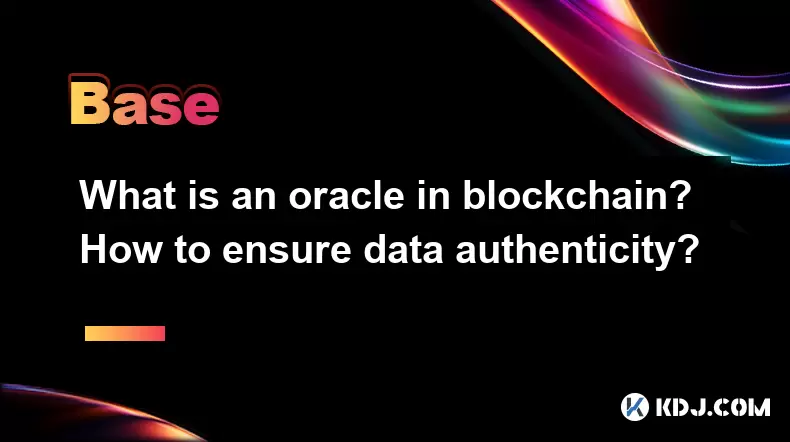
What is an oracle in blockchain? How to ensure data authenticity?
Jun 19,2025 at 08:49pm
Understanding the Role of an Oracle in BlockchainIn the context of blockchain technology, an oracle serves as a bridge between the blockchain and external data sources. While blockchains are inherently secure and decentralized, they cannot access real-world information on their own. Oracles enable smart contracts to interact with off-chain data such as ...
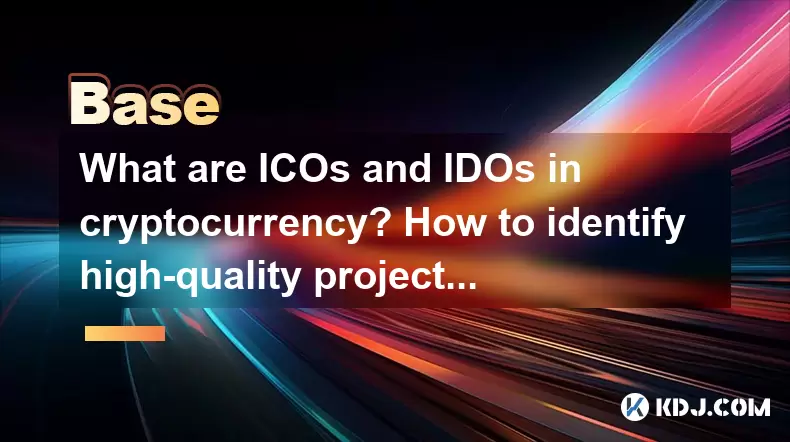
What are ICOs and IDOs in cryptocurrency? How to identify high-quality projects?
Jun 22,2025 at 11:49am
Understanding ICOs in CryptocurrencyInitial Coin Offerings (ICOs) are fundraising mechanisms used by cryptocurrency startups to raise capital for their projects. In an ICO, a company creates and sells its own tokens to investors in exchange for established cryptocurrencies like Bitcoin or Ethereum. The process typically involves the release of a whitepa...
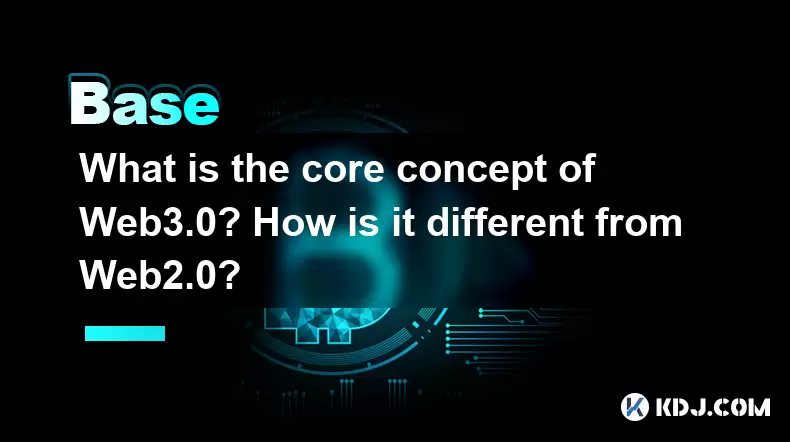
What is the core concept of Web3.0? How is it different from Web2.0?
Jun 21,2025 at 05:56pm
Decentralization as the Foundation of Web3.0The core concept of Web3.0 revolves around decentralization, which fundamentally challenges the centralized architecture of Web2.0. In Web3.0, control and ownership are distributed across a network rather than being held by a central authority or corporation. This is achieved primarily through blockchain techn...
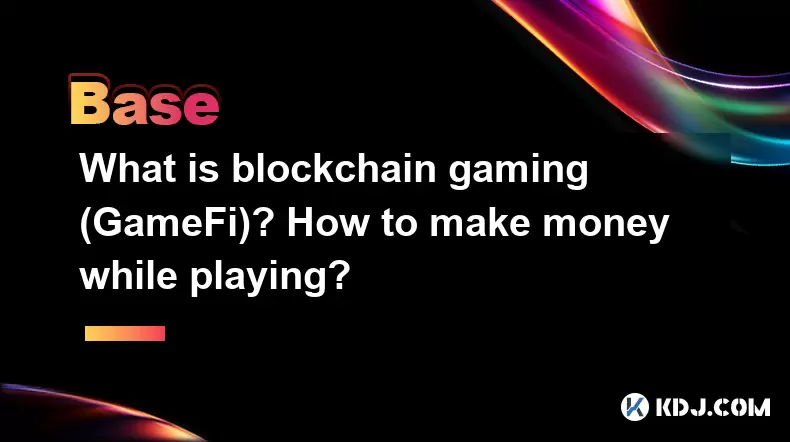
What is blockchain gaming (GameFi)? How to make money while playing?
Jun 20,2025 at 07:56am
Understanding Blockchain Gaming (GameFi)Blockchain gaming, often referred to as GameFi, is a fusion of blockchain technology and video games. It enables players to own in-game assets through non-fungible tokens (NFTs) and earn rewards via cryptocurrencies or token-based systems. Unlike traditional games where items are controlled by centralized develope...
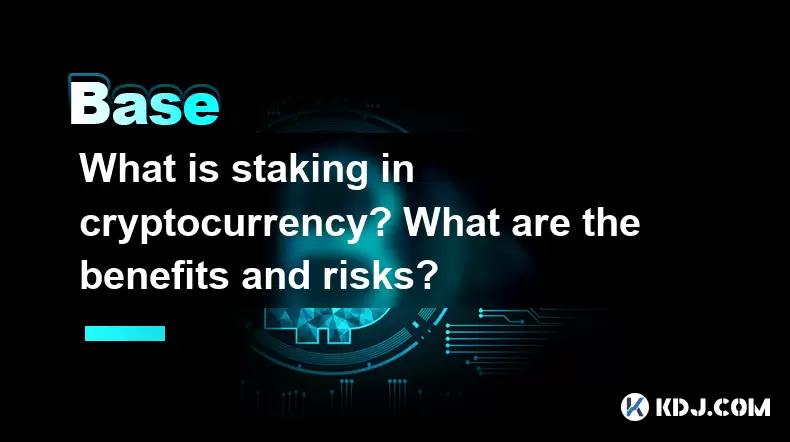
What is staking in cryptocurrency? What are the benefits and risks?
Jun 22,2025 at 10:01am
Understanding the Concept of Staking in CryptocurrencyStaking in cryptocurrency refers to the process of actively participating in transaction validation on a blockchain network that uses a Proof-of-Stake (PoS) consensus mechanism. Instead of miners competing to solve complex mathematical puzzles as in Proof-of-Work systems like Bitcoin, PoS blockchains...
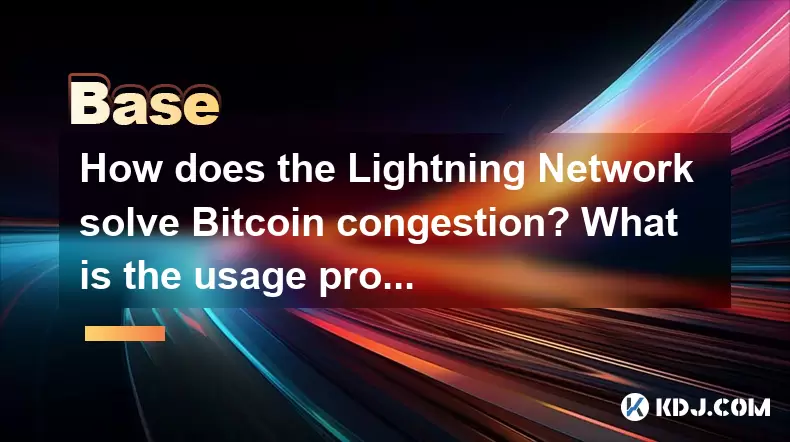
How does the Lightning Network solve Bitcoin congestion? What is the usage process?
Jun 23,2025 at 06:21pm
Understanding Bitcoin Network CongestionBitcoin, as a decentralized digital currency, operates on a blockchain that records every transaction in a public ledger. Each block has a limited size, typically 1 megabyte, which allows for only a certain number of transactions per second (TPS). When the number of transactions increases, the network becomes cong...

What is an oracle in blockchain? How to ensure data authenticity?
Jun 19,2025 at 08:49pm
Understanding the Role of an Oracle in BlockchainIn the context of blockchain technology, an oracle serves as a bridge between the blockchain and external data sources. While blockchains are inherently secure and decentralized, they cannot access real-world information on their own. Oracles enable smart contracts to interact with off-chain data such as ...

What are ICOs and IDOs in cryptocurrency? How to identify high-quality projects?
Jun 22,2025 at 11:49am
Understanding ICOs in CryptocurrencyInitial Coin Offerings (ICOs) are fundraising mechanisms used by cryptocurrency startups to raise capital for their projects. In an ICO, a company creates and sells its own tokens to investors in exchange for established cryptocurrencies like Bitcoin or Ethereum. The process typically involves the release of a whitepa...

What is the core concept of Web3.0? How is it different from Web2.0?
Jun 21,2025 at 05:56pm
Decentralization as the Foundation of Web3.0The core concept of Web3.0 revolves around decentralization, which fundamentally challenges the centralized architecture of Web2.0. In Web3.0, control and ownership are distributed across a network rather than being held by a central authority or corporation. This is achieved primarily through blockchain techn...

What is blockchain gaming (GameFi)? How to make money while playing?
Jun 20,2025 at 07:56am
Understanding Blockchain Gaming (GameFi)Blockchain gaming, often referred to as GameFi, is a fusion of blockchain technology and video games. It enables players to own in-game assets through non-fungible tokens (NFTs) and earn rewards via cryptocurrencies or token-based systems. Unlike traditional games where items are controlled by centralized develope...

What is staking in cryptocurrency? What are the benefits and risks?
Jun 22,2025 at 10:01am
Understanding the Concept of Staking in CryptocurrencyStaking in cryptocurrency refers to the process of actively participating in transaction validation on a blockchain network that uses a Proof-of-Stake (PoS) consensus mechanism. Instead of miners competing to solve complex mathematical puzzles as in Proof-of-Work systems like Bitcoin, PoS blockchains...

How does the Lightning Network solve Bitcoin congestion? What is the usage process?
Jun 23,2025 at 06:21pm
Understanding Bitcoin Network CongestionBitcoin, as a decentralized digital currency, operates on a blockchain that records every transaction in a public ledger. Each block has a limited size, typically 1 megabyte, which allows for only a certain number of transactions per second (TPS). When the number of transactions increases, the network becomes cong...
See all articles

























































































